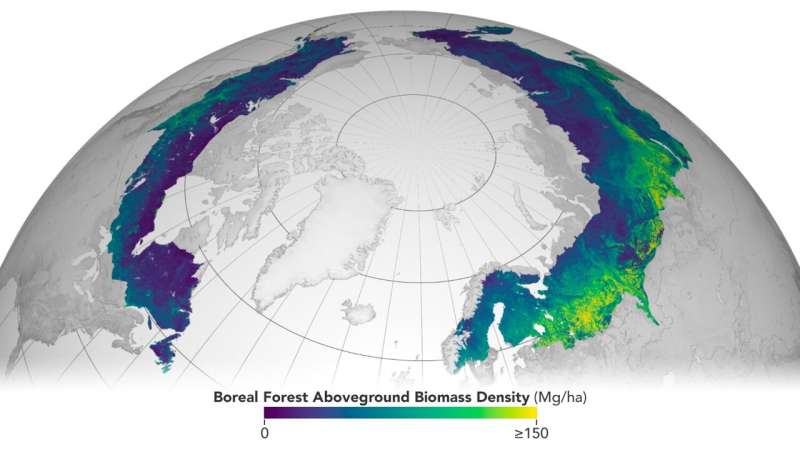ESA and NASA release the first globally harmonized assessment of above-ground biomass

Today, ESA and NASA have publicly released the first globally harmonized assessment of above ground biomass—information that is vital for managing global climate change. The Multi-Mission Algorithm and Analysis Platform (MAAP) provides seamless access to above ground biomass information from both NASA and ESA Earth observation data. The revolutionary open-science tool is now fully operational and accessible online.
MAAP is the culmination of a two-year NASA and ESA effort and reflects the cooperation between the two agencies under the NASA and ESA JPPG (Joint Program and Planning Group) Joint Working Group (WG) on Ground Segment and Operations.
The MAAP platform enables international scientists and researchers to collaboratively develop algorithms and code as well as analyze and visualize large datasets acquired from sources including satellite instruments, the International Space Station, and airborne and ground campaigns. The large data and high-performance computing required for MAAP, along with a shared code repository and catalog, are stored and managed in the cloud. MAAP capabilities are supported and shared between NASA and ESA.
ESA's Biomass data quality manager, Clement Albinet, comments, "Biomass is the first ESA mission with open-source algorithms. Thanks to that, the community will be able to access all the source code, the test data and all the documentation, and will be able to contribute in a collaborative way to the improvement of the Biomass products. MAAP will allow scientists to easily work with large datasets at a global scale and to finally focus on science."
The initial application of MAAP focuses on above-ground biomass to help determine the size and carbon content of Earth's forests. These data are vital for informing our understanding and forecasting of climate change, including regular updates to the Intergovernmental Panel on Climate Change (IPCC).
While biomass is the first application of MAAP, it easily can be adapted for collaborative exploration across the breadth of science data and scientific disciplines available through NASA, ESA, and similar research agencies.
MAAP currently includes data from missions such as NASA's Global Ecosystem Dynamics Investigation (GEDI) and the joint NASA/ESA AfriSAR campaign, and will eventually support data from upcoming NASA and ESA missions such as the joint NASA/Indian Space Research Organization SAR (NISAR) and ESA's Biomass mission.
Several current projects are producing continental to global biomass maps for 2020, for example ESA's Climate Change Initiative Biomass and JPSs global map, both at 100 m, as well as NASA's GEDI's 1 km map. The world's Earth observation biomass community is undertaking an exercise on MAAP aimed at resolving discrepancies between those products and producing harmonized estimates of biomass and uncertainty at a policy-relevant, jurisdictional-level scale.
The MAAP dashboard can be accessed here.
Provided by European Space Agency





















